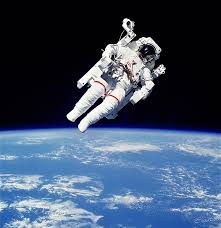 Rotating in its orbit at around 400 km (250 miles) above earth, the International Space Station (ISS) is among the perfect examples of humanity’s scientific and industrial prowess. The ISS also represents unity among nations, as it is a collaborative project involving several space agencies such as NASA (US), Roscosmos (Russia), CSA (Canada), ESA (Europe) and JAXA (Japan).
Rotating in its orbit at around 400 km (250 miles) above earth, the International Space Station (ISS) is among the perfect examples of humanity’s scientific and industrial prowess. The ISS also represents unity among nations, as it is a collaborative project involving several space agencies such as NASA (US), Roscosmos (Russia), CSA (Canada), ESA (Europe) and JAXA (Japan).
The ISS maintains a regular crew, who stay there for various tasks including observation, space exploration and laboratory experiments. This brings up the question as to how do these astronauts get their oxygen supply. Well, the answer to that is the ISS gets its oxygen supply through various means. When you are staying in a home that’s 400 km above earth, it becomes hugely necessary to have multiple sources of oxygen. Let’s take a look at how astronauts get oxygen on ISS.
Oxygen from water – A molecule of water (H2O) contains two atoms of hydrogen and one atom of oxygen. On the space station, this hydrogen and oxygen atoms are separated through a process called water electrolysis. When electric current is passed through water, it separates hydrogen and oxygen atoms. The oxygen is then collected and circulated across the ISS. This is the primary source of oxygen on the space station.
If you are wondering how the ISS gets its water supply, it is regularly replenished by supply space ships that are sent regularly to the ISS. Such supply ships carry various items such as food, medical supply, and other tools and equipment. For electricity, the ISS generates it using its solar panels. There is no shortage of electricity onboard ISS, as its solar panels are pretty huge, covering an area of 2,500 square meters. This is close to around half the area of a football field.
Compressed oxygen tanks – The ISS also stores its oxygen in highly pressurized tanks. These are used in situations when the oxygen level inside the ISS starts to drop due to any reason. The atmosphere inside the ISS is maintained by the Environmental Control and Life Support System (ECLSS), which is one of the most advanced pieces of human made machinery. The compressed oxygen tanks are replenished by supply ships.
Chemical oxygen generator – This comprises a portable canister filled with solid lithium perchlorate. To release oxygen, this canister has to be first put inside a reactor. After this, the igniter pin has to be pulled. As the perchlorate starts to burn, it releases oxygen. Each canister can provide oxygen supply to one crew member for 24 hours. These are to be used when everything else has failed on the space station.
As is obvious, there are several backups for oxygen supply on the ISS. NASA is also currently exploring the possibility of cloning the earth’s natural system, where oxygen can be produced using plants. However, that is unlikely to happen anytime soon. Till something better comes along, the above oxygen generation systems should continue to serve the needs of mankind.
 Newspatrolling.com News cum Content Syndication Portal Online
Newspatrolling.com News cum Content Syndication Portal Online






